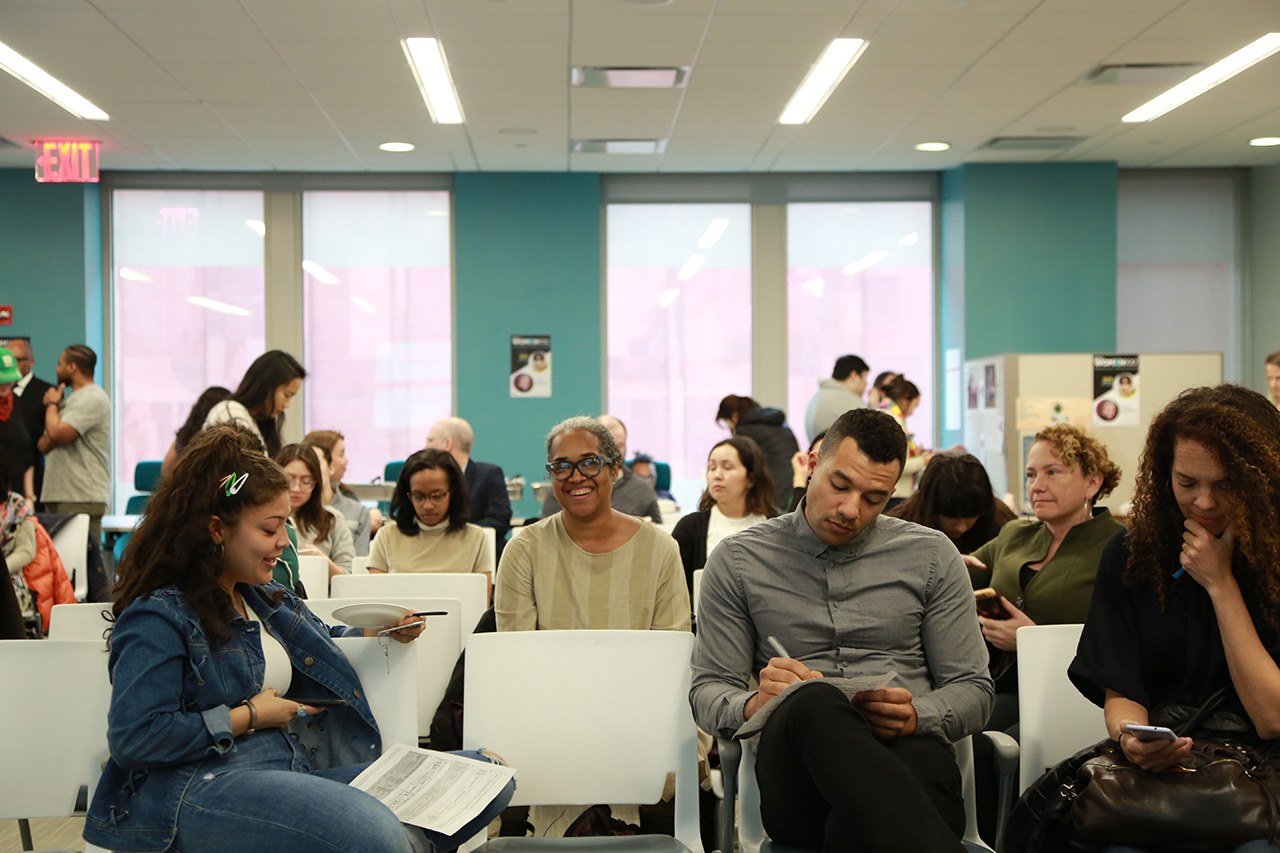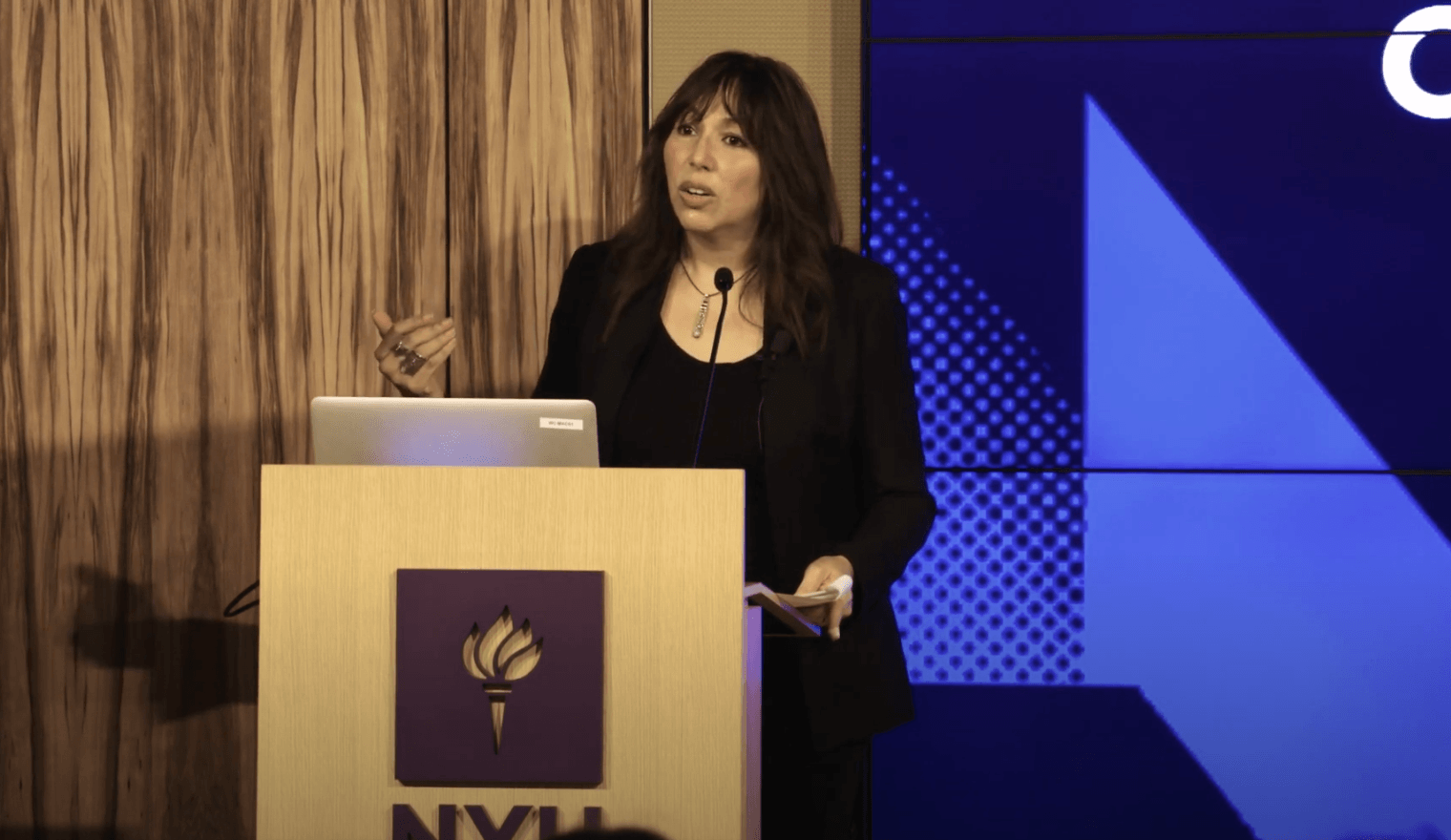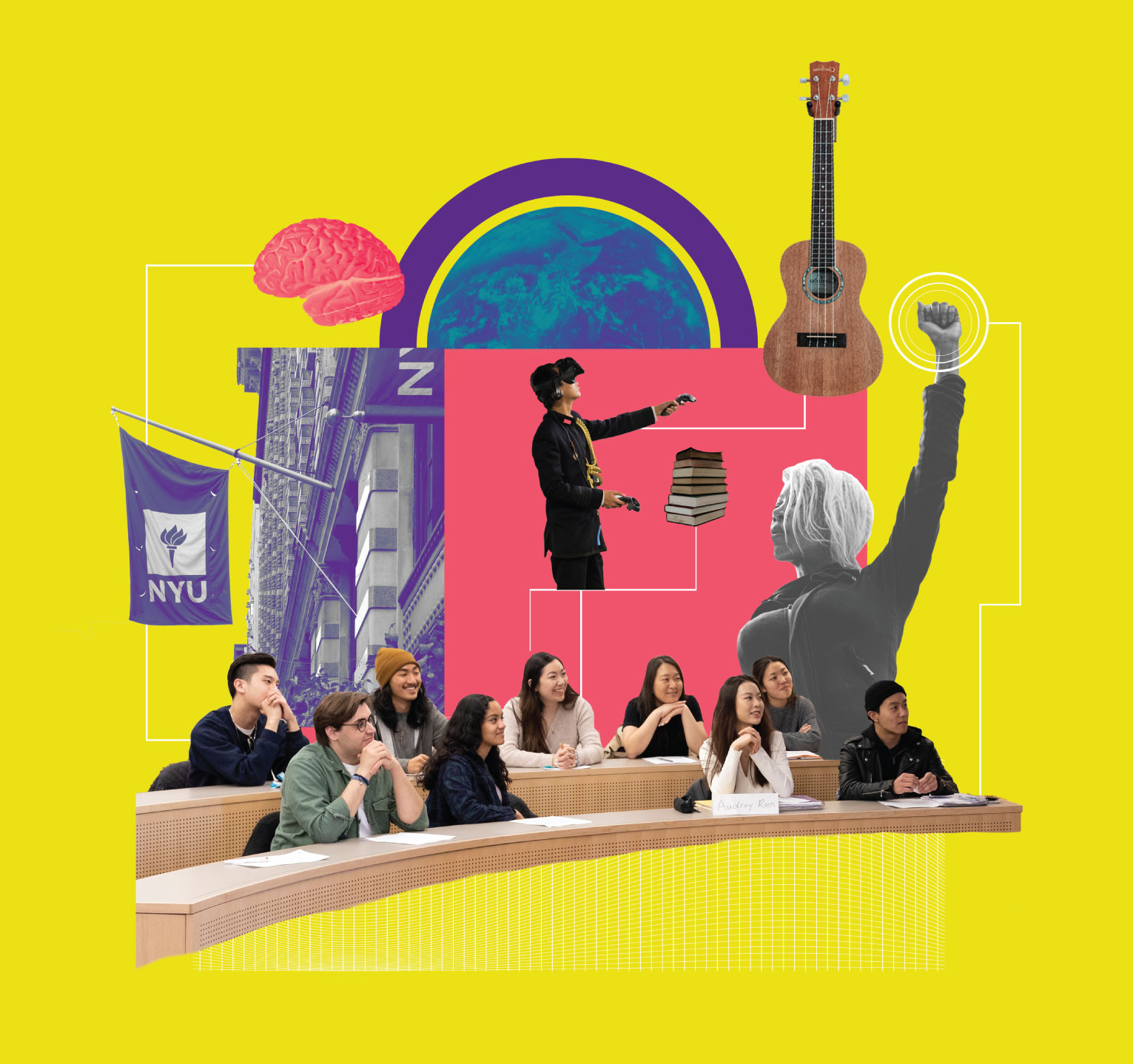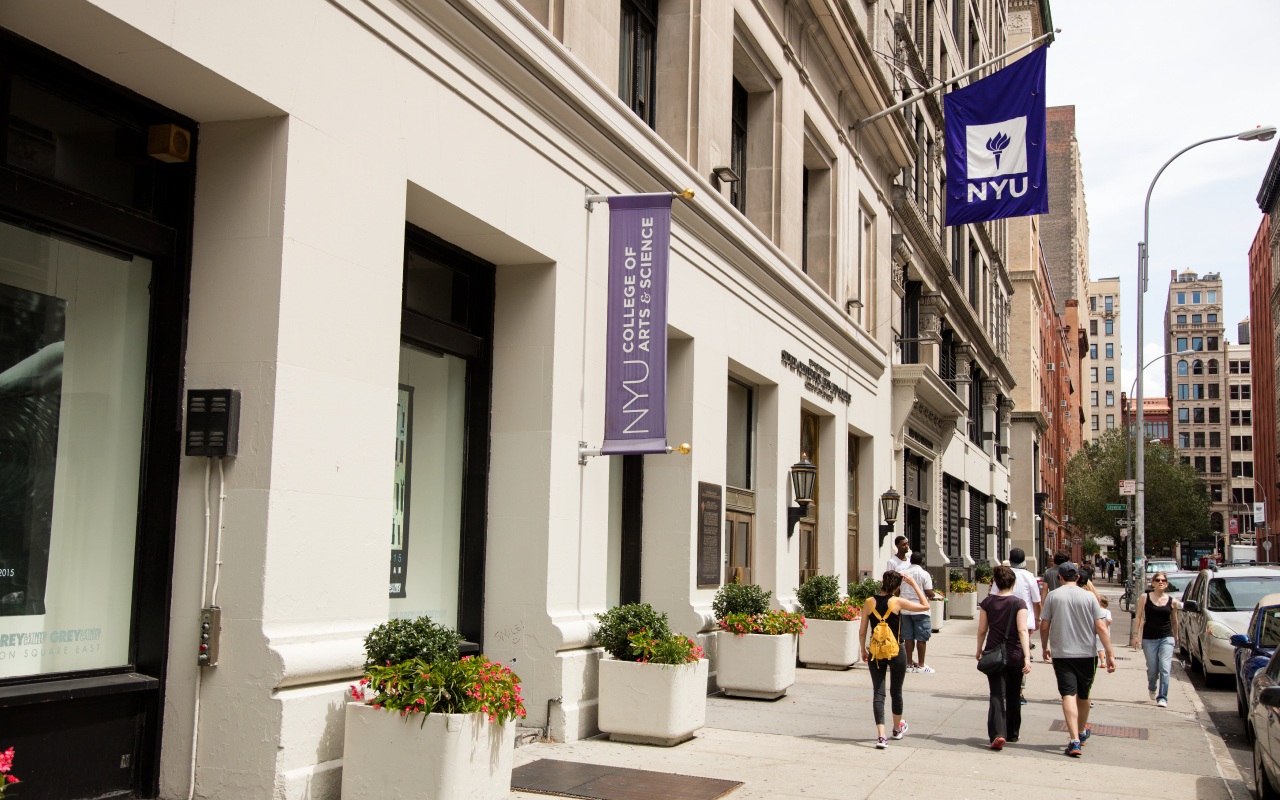
“What is an identity? Does everyone have one? How is identity formed, and how permanent is it? Is it strictly a human phenomenon, or do other entities have them?” Dr. Jennifer L. Morgan’s Big Ideas Course Series course on identity set out to answer questions like these. She and Dean for the Humanities Carolyn Dinshaw pulled out all the stops with the curriculum. The resulting seven-week spotlight was a comprehensive, interdisciplinary approach. It included sociology, history, gender and sexuality studies, media studies, and more. Through a series of thought-provoking lectures from top scholars, students learned to view what many consider an intimately personal experience through the much broader lens of human culture and history.
“I’m sure that many students initially signed up for the course thinking about their own experience of identity. Like, ‘I want to know more about me,’” says Dr. Morgan. She is the chair of the Department of Social and Cultural Analysis as well as a professor with the Department of History. “But what they ended up with was this incredible arsenal of tools with which to think about identity as political and shifting and historical, as singular and as collective, as indigenous and as diasporic, and even as corporeal.”
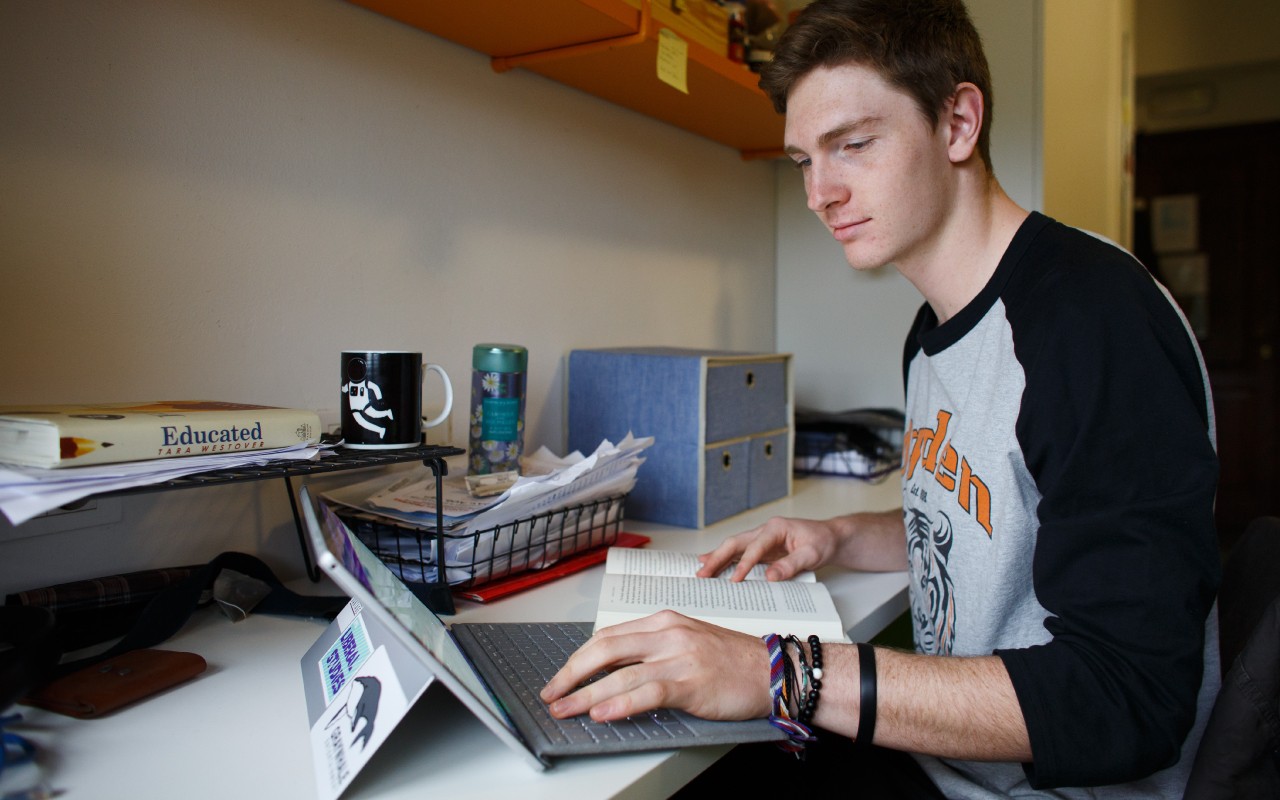
A New Way to Learn
The Big Ideas Course Series as a whole was created to “mobilize the strengths of NYU to develop a new academic experience,” according to Dr. Charlton McIlwain. He is a professor of Media, Culture, and Communication as well as the Vice Provost for Faculty Engagement and Development at NYU. During the pandemic, this meant giving undergraduate students from any NYU school or location access to our community’s world renowned thinkers. It also meant using technology to inspire new kinds of learning, and crafting an interdisciplinary courses geared toward addressing some of the biggest conversations dominating public attention today. And led by a dozen brilliant experts at the top of their respective fields, that’s exactly what Dr. Morgan’s identity course did.
Each week, students watched a pair of interconnected lectures. They heard from speakers like Distinguished Writer in Residence Salman Rushdie or Professor of History and Irish Studies Kevin Kenny. Then, they began formulating their responses for the class discussion board. This Big Ideas course was entirely asynchronous—the students never gathered virtually—which meant that their conversations were through written responses. But students were able to dig deep. They made incredible connections because of their spectrum of experiences, both academically and in life as a whole.
“The topics produced so many opportunities for students to use their distinct cultural experiences to offer an idea or argument or analysis,” says Justin Linds. He is a Ph.D. student in American Studies who also served as a teaching assistant for the class. “When talking about language and identity, I remember students saying, ‘What do gendered articles do to the nature of gender in Spanish?’ And then someone else would add, ‘What about Korean?’ Or, “What about Arabic?’ That cross-cultural perspective brought so much to the class.”
NYU Big Ideas: Salman Rushdie on Identity
Identity as Cultural and as Corporeal
Each week, this Big Ideas course offered lectures grounded the analysis of identity in a different discipline. Some lectures—like the ones by Professor of Art & Public Policy and Middle Eastern & Islamic Studies Ella Shohat and Professor of History Hasia Diner—focused on Jewish, Arab, and Middle Eastern identity. Diana Taylor, Professor of Performance Studies and Spanish, looked at indigenous identities. Meanwhile, Chris Straayer, Associate Professor of Cinema Studies, talked about transplantation surgeries—surgeries involving organs like the face or uterus—from the perspective of film and media.
“There are two groups who normally receive these surgeries. They are transgender people who are seeking gender reassignment surgery, and members of the military seeking surgery for war injuries,” Justin summarized. “Professor Straayer discussed how the public discourse for these situations is totally different. American military veterans will be seen as ‘deserving.’ Meanwhile, trans people sometimes won’t.” Straayer’s lecture was also a chance to explore how identity is rooted in the body rather than simply constructed by ideas. In other words, the degree that someone’s hands or face or other features affects how they see themselves.
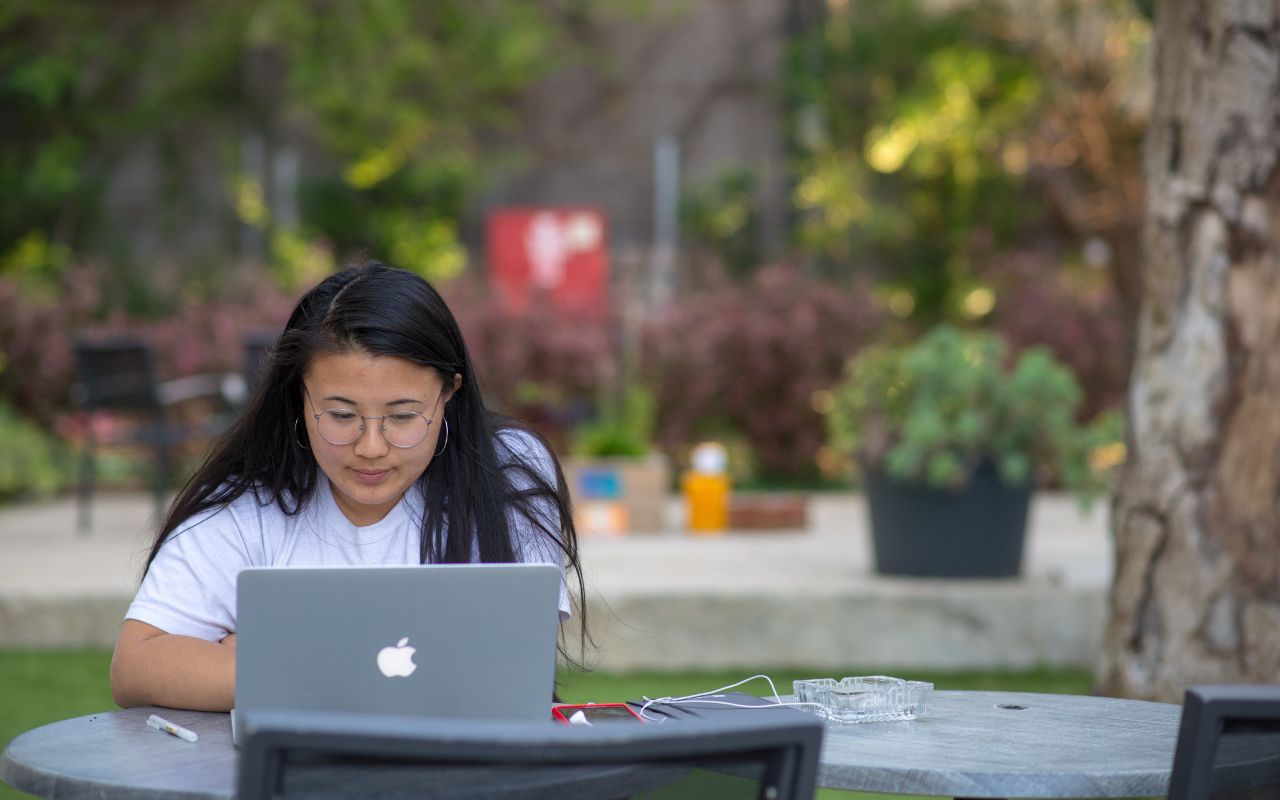
Identity as a Political Force
Another week, Cristina Beltrán, associate professor of social and cultural analysis, and Patrick Egan, associate professor of politics and public policy, explored how identity comes into play in political science. Professor Beltrán discussed Latino identities. Specifically, she focused on the ways organizing and activism can leverage those identities into a source of political force. Then, Professor Egan took a closer look at the importance of using surveys to measure with precision the way LGBTQ people feel about politics. “It’s only within the last 30 years that we’ve been able to do that,” Professor Egan explains. “You gain so much additional insight into how identity is associated with political attitudes when you focus on analytical measurement.”
From a political perspective, the way the class as a whole looked at identity is incredibly powerful. That is, from multiple perspectives, with no single correct interpretation. “We’ve really reached a point in American history where identity is incredibly salient in understanding politics. Identity has always been important. But we have a multiplicity of identities finally at the table. And you see the resistance and reactions to them coming into power,” Professor Egan says. “A course like this, that provides different perspectives to understanding identity, is more important than ever. It gives us the building blocks to understand what’s going on right now.”
“If young people today can finish their education with a sense that there are different ways to approach a problem—that there are different methods for understanding an issue or a difficult subject—then that’s amazing,” Justin agrees. “And in this course, students did. They approached controversial and difficult topics with excitement and intelligence, and that gave me hope for the future.”

